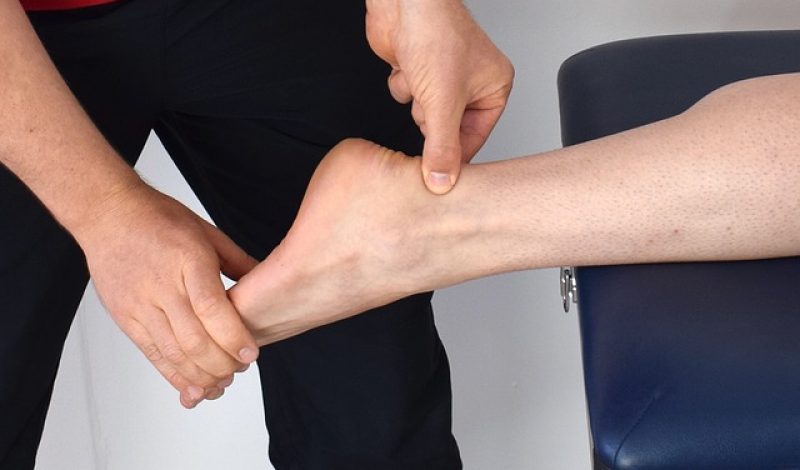About Achilles injuries
Monika talks about Achilles injuries.
I’m a huge Basketball and therefore NBA fan! Watching the playoffs this summer in Toronto, myself and other basketball supporters around the world saw Kevin Durant’s Achilles tear during a crucial final game. (Here’s the link if you really want to watch the video http://bit.ly/2lBtE2W ).
This got me thinking about how many patients as a chiropractor I’ve seen with Achilles tendon pain; I myself have even had a bout of Achilles tendonitis whilst playing Lacrosse competitively, so I understand how frustrating it can be. Whilst common in athletes, I have seen it in all different types of people. In fact, a fifth of the over 50’s population actually suffers with some degree of Achilles tendinopathy (pain), and whilst ruptures are extremely rare, this heel pain can be frustratingly persistent and prevent us from continuing with our normal activities. People with Achilles tendinopathy will experience pain, stiffness and sometimes swelling which restricts our movement.
What Is Achilles Tendinopathy?
The Achilles tendon attaches the gastrocnemius and soleus (calf) muscles to the heel bone of the foot and is one of the strongest tendons in the body. It helps you in activities such as running, jumping and changing direction by acting as a spring to propel you forward.
You can develop Achilles tendinopathy either from trauma which hasn’t healed properly over time, or from repetitive small irritations. In both cases, the damage progressively worsens causing pain and thickening of the tendon. It is more common in people who do a lot of jumping or running activities.
Many people wrongly think that an Achilles tendinopathy means that their tendon is similar to a torn rope, but research has shown that this is incorrect. Studies have shown that an Achilles tendinopathy is more like a stack of doughnuts, whereby there may be a hole in the middle, but it is surrounded by the dough of the doughnuts (in other words, healthy tendon tissue surrounding the damaged area). The tendon adapts by thickening to give more support and make it stronger to allow you to continue to exercise.
Knowing this, it is important to remember that pain itself does not reflect the amount of damage to the tendon. Another study showed that 30% of Australian Football League players had a “hole” in their Achilles, but had absolutely no pain at all. Your Achilles is a strong tendon and it can withstand a lot of force. (https://onlinelibrary.wiley.com/doi/abs/10.1111/sms.12491)
Who Gets Achilles Tendinopathy?
It is most common in athletes who are involved with explosive movements and running, however most of these people who experience this are aged 40-65 (https://bmcmusculoskeletdisord.biomedcentral.com/articles/10.1186/s12891-016-0885-2 ).
However, being overweight, diabetic and having high cholesterol are all risk factors for increasing your chance of developing Achilles tendon pain.
How to recover from Achilles Tendinopathy
Achilles Tendinopathy rarely rupture. Completely resting your tendon either by using crutches or a boot should be avoided. This is because by completely resting it, your tendon and calf muscles start to become weak and you are prolonging your recovery time. The “use it or lose it” principle really does apply here.
Tendons, just like muscles, get stronger with exercise. Research tells us that starting with an exercise program which gently strengthens the tendon, and then slowly reintroducing exercises which test the spring of the tendon have the best results.
Your chiropractor can also treat the surrounding musculature to help compliment and go through rehabilitation programme with you.
It can be tempting to look for a quick fix such as a steroid injection, however these should only be a last resort as your exercise programme is the best and most effective way to recover from an Achilles Tendinopathy.
Here at Skelian in Cheltenham, we have a shockwave machine, which is an extremely effective treatment for tendon related pain alongside your exercise programme. Shockwave is a sound wave which carries high energy which causes restoration and repair within the tendon. Shockwave therapy can accelerate tissue healing and re-growth meaning patients usually find they are getting back to their normal activities a lot quicker than just with an exercise programme alone (See more information at: https://www.shockwavetherapy.eu/subpage#top ).
Achilles tendinopathy, whilst painful and frustrating is something that we can effectively treat with exercise, shockwave and manual therapy. If you have been suffering with heel pain, give the clinic a call or click on the link below to book in and speak to a chiropractor to see whether we feel you would be eligible for treatment. Book an appointment with us and please email stpauls@skelian.co.uk or call Skelian on 01242 254000
https://www.instagram.com/skelian_chiropractic/
https://www.facebook.com/skelianclinic/
https://www.youtube.com/channel/UCCJ9BXYUAAfOie7zTUUeIKA/videos





